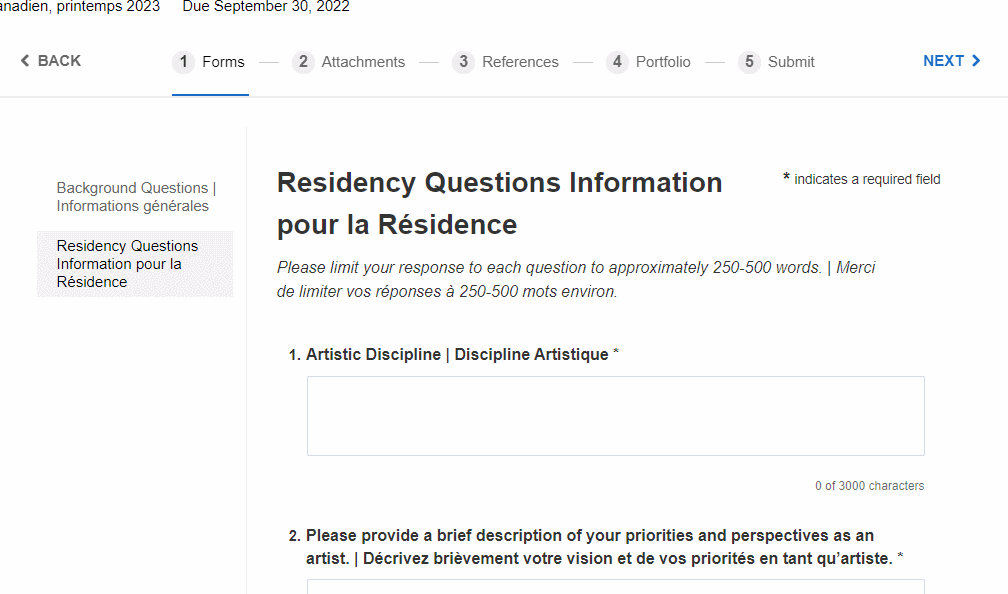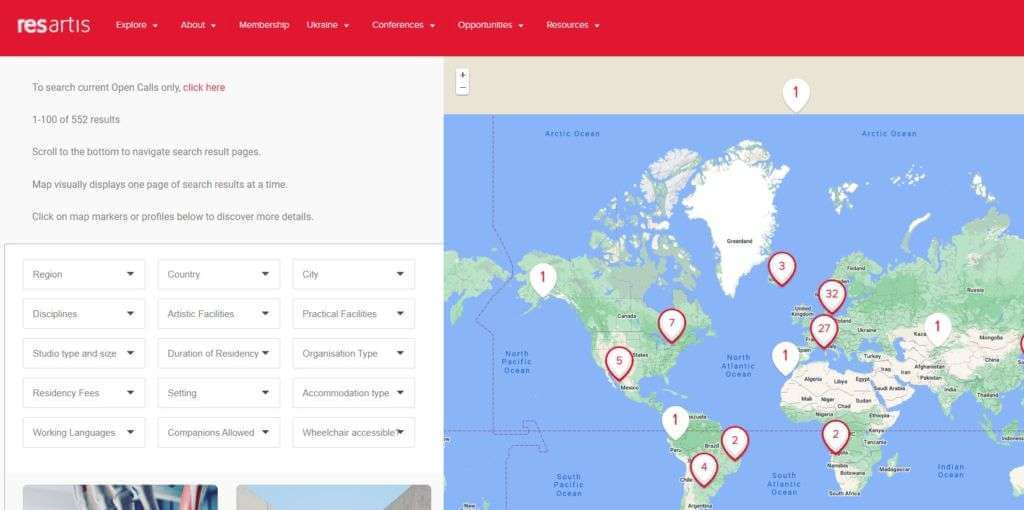Have you been sick of commercial work and need a break to focus on your art practice? Or do you have a strong artist practice but want to find a place to showcase your work, find funding to manifest your projects, or enjoy a time to create your work in an exotic destination? This blog guide will give resources and a framework to find the artistic opportunity that aligns with you and tips on how to get accepted.
Why Art Residencies
Doing contract work for most of the year, it can be refreshing to have time to do your own personal creative work. Working on personal projects is challenging when it’s not your source of income. Still, when there’s a dedicated, limited time, it can be inspiring and give enough motivation to create something unique. It can also be an excuse to visit a location you wouldn’t have on your own. Often art residencies are located in places that get fewer visits by tourists, which gives a unique experience of living there for some time and interacting with locals. Usually, at the end of an art residency, there is a show or showcase for the residents’ work; you can list on your CV how you had a show in an exotic destination. After the residency, your project can continue to live on and be used to submit to immersive media festivals and events. You’ll also meet a lot of interesting artists who might be fellow residents with you.
I cover more Art Residency FAQs and talks about my personal art residency experience in Cyprus in this video here:
Difference between Call for Artist, Artist Residencies, Artist Grant
Depending on what your goals are, you would have to submit to different types of art opportunities. But what are the differences? Do you have a project already done and want to exhibit it somewhere? Do you want money to fund your project or time to work on a personal project? Let’s break down the main types here:
Call for Artist: An opportunity notice that allows artists to show their artwork in a space: gallery, event, festival, etc. Sometimes there is a stipend, but it’s not a significant amount. I recommend only doing call for artist opportunities if you already have a project that aligns with the application you want to showcase rather than making a new piece for the call. It is also good to see if the opportunity provides accommodation to attend and set up for the show.
Artist Residencies: An opportunity for the artist to create personal artwork for a certain period of time. Many art residencies provide artists with living spaces, studio spaces, and space to showcase their work. There are both paid and stipend art residencies. Depending on your residence, some countries’ governments can provide grants to cover paid art residency fees.
Artist Grants: An opportunity for support funds for your art project. Artist grants are significant if you have a project in the works but would like some financial aid to support your project.
Things to Consider
Many traditional art residencies aren’t designed for digital artists, so there are some things to consider before applying.

- Equipment: Do you need equipment? Can the residency provide equipment? Equipment is something to have a clear idea of early on so you can design your project around the given boundaries. If you need a 5000 lumen projector, can you get access to it? Do you need speakers for your piece? It is good to ask if there is a place nearby you can rent gear from or does the local government have the equipment you can borrow. Even if you have your equipment you can bring, it is also important to consider international voltages and if your gear can work.
- Space: Does the studio space have enough outlets for your equipment? Can you have an area you can control lighting if you’re projecting? Is there a studio space to have an installation? Space can influence the project you want to propose for the residency.
- Stipend vs. non-stipend: Not all residencies are the same. Some provide some funding, and some require a fee to be there. The residencies that provide stipends are commonly more competitive. Yet check your country’s government if they provide funding for art residencies fees. One country that has this benefit is Canada. If you are an educator, some schools and universities also help fund art residencies for their teachers as a form of continuous education.
- Time: Art residencies can span from a few weeks to two years. How much time can you take off? I find a 1-3 month period to be an optimal time frame to create a piece, feel inspired, and have enough time in the rest of the year doing commercial projects.
- Solo or Group: Some residencies have multiple artists in their facilities at a time, and for some, there is just one artist in a given period. What do you feel more comfortable with? When there are a few artists, it can be motivating to learn from different artists, and you can find collaboration. Yet you may also find it distracting and prefer to have a workspace that is more private.
- Destination: Where do you find yourself to be most inspired? Do you want to spend a month by the coast in the South of Spain, or in a cabin in New England? The residency destination is the opportunity to try a different work environment.
- Objective: Be honest about why you want to do an art residency. You feel burnt out and want to do a personal project; you want a structured vacation; you want to feel inspired by other artists and form an international art community; and you want more work in your creative portfolio. Understanding your goals will allow you to filter which residency you wish to apply to.
Resources
So, where do I find these art residencies??? Here are some resources. Note that these are for general art residencies, not just for media artists. You’ll need to do the work to filter out which residences accept the type of work you do. If you’re not sure, usually, the residency website has a section where they share information about past residents’ portfolios. See if any artist is doing digital or immersive work.
Spreadsheet
- Big Artist Opportunities Spreadsheet: A few years ago, artist Everest Pipkin put together a guide for art opportunities. I recommend making a copy of the spreadsheet and filtering the ones that seem promising.
Sites
- CaFÉ call for Entry: Most opportunists on CaFe are U.S. based, but they have resources for grants, calls for artists, and art residences. Most of the submissions require a fee.
- resArtis: ResArtis has an extensive listing of art residencies, yet many of the residences require a fee. So if you want a residency that doesn’t require payment, read the requirements carefully or filter the search to list residencies that don’t need a fee.
Newsletters
- Colossal Opportunities for Artist: They have monthly newsletters that share grants, call for artist, and art residency opportunities. Subscribe here
Facebook Group
Ask to join these Facebook groups that regularly post artist opportunities.
Another way of approaching getting an art residency:
- Create your art residency opportunity. Reach out to media studios about your project proposal. You will provide your accommodation, but you can use their space and equipment for your project. In return, you can give a workshop or talk to their employees or community. It is often beneficial for studios to market how they support artists in the industry. It is helpful if you have, or you know someone with, a relationship with the studio you’re reaching out to.
- Look at other media artists who do similar work and what art residencies they did in the past. Usually, they will list the residences they participate in their CV on their websites.
What Materials to Apply
Different art residencies ask for additional material, but generally, they ask for some version of these things.
- Project proposal: Sometimes it is written or sometimes a pdf proposal. In your submission, it is good to have references and past work images so they know what you’re doing.
- Artist statement: A artist statement is a written description of your artwork that gives an insight into your creative history, material choice, and ideas you address.
- Portfolio: The portfolio includes images or videos showcasing your work. For art, residencies are usually better to have personal work rather than commercial projects.
- Reference letters: Sometimes, art residencies request reference letters.
- Community Engagement: Often, residencies ask if you can propose an element of community engagement in the form of a talk or some workshop for the public.

Tips & things to consider:
- How do you involve the residency’s location or theme in your project? Make your project special where you can’t do it anywhere else but at the art residency.
- Many traditional art residencies don’t understand digital, so be patient in explaining why and how media art is essential.
- It’s okay if your project changes, but the residency wants to know what you can do during the time frame.
- Be prepared for rejections; residencies can often be a bit political where the artists attending are from invites rather than artists who applied. It isn’t very pleasant, I know. Yet keep trying and see if you can form a relationship with the residency. Follow their newsletter and email, and contact them about upcoming events, etc.
You’re Accepted Now What?
You’re in! So do you have all you need to create the best project possible? Before attending, I recommend emailing the residents to ask what equipment they have and what type of space they have. It’s important not to come across as demanding but as professional, prepared, and trying to work with them to achieve the best possible results. If some material seems challenging to get, ask if you can ship materials to their address and what online service they recommend. If their country’s Amazon is reliable, Amazon can be a good option. Many countries will also have regional alternatives to Amazon.
Another thing you can consider is connecting with the other artists attending the residency simultaneously. Suppose the residence doesn’t have a pre-meeting before the residency. In that case, you can email the residency coordinator if they can provide the information of the other artist so you can contact them. You can see if there’s an artist you would possibly want to collaborate with once you’re onsite.
You can also look up and contact previous residents to ask about their experience in the art residency. Since the residence is a limited time, it is good to have an objective going in.
Wrap Up
Art Residencies can be intimidating and confusing to start. Yet once you get started, it becomes more natural practice. If more immersive media artists get into the art residency space, it will also provide more opportunities to people in the field. I hope more residencies will become available to provide equipment and room for more experiential media designers. If you have additional resources to find artist opportunities and residencies, please feel free to share them in the community!







